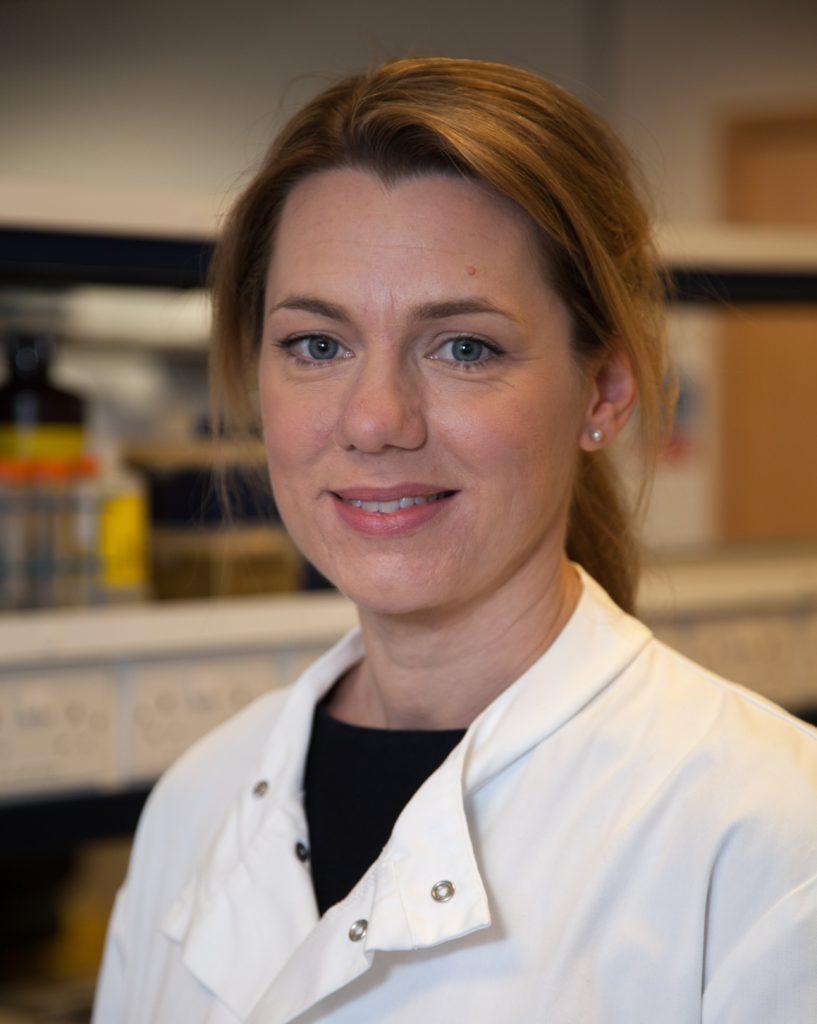Chromosomal instability in ovarian cancer
Q&A with Dr Sarah McClelland and Dr Nadeem Shaikh

We spoke with Dr Sarah McClelland and senior postdoctoral researcher in her group, Dr Nadeem Shaikh, about the team’s most recent paper, published in Cancer Research, which set out to explore the mechanisms of chromosomal instability in high-grade serous ovarian carcinoma - the most common type of ovarian cancer. The study sheds light on how these mechanisms may be able to be targeted to overcome treatment resistance in this cancer type.
Chromosomal instability is a source of genetic variation and involves the continual change in number or physical arrangement of chromosomes (structures that carry genetic information) within cancer cells over time as a tumour develops and grows. Instability can occur in many ways, for example due to defects in replicating DNA, or erroneous segregation of DNA during cell division. Despite being a feature of many cancer types, the causes of chromosomal instability are poorly understood.
What is the role of chromosomal instability in cancer?
When cancer cells exhibit chromosomal instability (CIN), different cancer cells in the tumour population are continually evolving in different ways, generating genetically diverse populations of cells. Some of these cells may have characteristics that confer an increased ability to adapt to and survive in new situations, such as when they are treated with chemotherapy. Chromosomally unstable cancers tend to lead to worse patient outcomes than stable ones.
What is your new study about? What did you find?
The vast majority of cancer studies about CIN have been carried out in colorectal cancer. In this study, we used a panel of ovarian cancer cell lines to show that this phenomenon also exists in ovarian cancer, although to greater extremes and with subtle differences to what we see in colorectal cancer cells.
Specifically, we observed that ovarian cancer cells suffered from high rates of segregation errors and prolonged delays during cell division. We also found specific links between the different molecular pathways that drive CIN and how ovarian cancer cells respond to certain clinical chemotherapeutics. Unusual responses to DNA damage and DNA replication stress gave us indicators of which cell lines were resistant to a group of drugs known as PARP inhibitors, while cells with increased rates of microtubule growth were more resistant to high doses of paclitaxel chemotherapy.
What are the wider implications of your findings for ovarian cancer?
We found that high-grade serous ovarian cancer cells responded well to both nucleoside-supplementation and low-dose paclitaxel treatments to reduce CIN; this opens the avenue to further research into whether these are practical treatments for limiting instability in patient tumours, to block them from evolving their way past chemotherapy. However, most of the assays we used in our study on these cell lines are not currently feasible for identifying CIN in patient samples; therefore, before our research findings could inform patient treatments, there is a great need to develop methods which are practical in clinical settings.
What are your next steps for this research?
We want to study these pathways in a preclinical model to ensure what we have seen in our lab-based cell lines is relevant in vivo and to determine whether our findings could be extended into patient studies. We also want to see the relationships between the mechanisms driving instability and the changes to the genome by studying it at the single-cell level to get an in-depth look at what is happening to cancer chromosomes at each step along the process of CIN. Our preliminary work in this area suggests we may be able to interpret cancer chromosome ‘chaos patterns’ to reveal the ongoing cellular defects driving CIN, providing a genetic biomarker of the best treatment for each tumour based on their ongoing CIN types.
This research was performed in collaboration with Professor Fran Balkwill and Dr Jun Wang’s Bioinformatics core service at the Barts Cancer Institute, and the Wellcome Centre for Human Genetics at the University of Oxford. The research was supported by Wellbeing of Women and Barts Charity.
Category: General News, Interviews, Publications

No comments yet